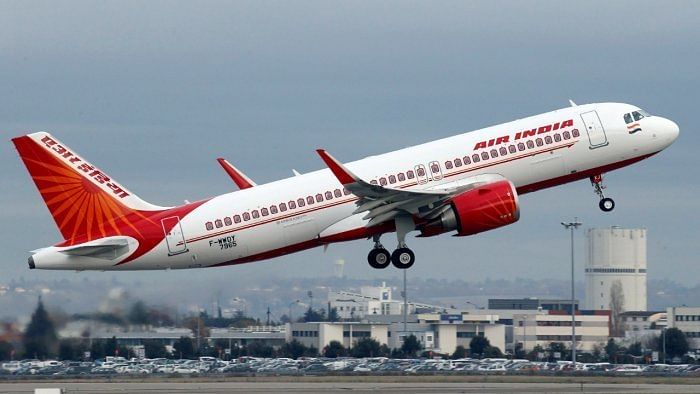
It had been common knowledge for some time now that Air India was going to place a large order for aircraft for its fleet. On February 14, Air India made the order public in a high-profile announcement. The order for 470 aircraft is split between the two major aircraft manufacturers, US-based Boeing and France-based Airbus.
The order indicates that Air India, under the Tatas, has its eyes set on becoming a major player, not only in the domestic aviation space, but also in the global market. What the order also reveals is the strategy that the Tatas, which have been tight lipped about its plans for the Maharaja, are likely to follow.
With 400 of the 470 aircraft (~85 per cent) being of narrowbody aircraft (190 Boeing 737 MAX, and the 210 Airbus 320 New Engine Option aircraft), it is clear that Air India’s focus is now going to be largely on the domestic market and those countries where the narrowbody aircraft can fly.
Already under the Tatas, Air India has seen its market share move up to 10 percent with the combined efforts of Vistara and Air India. In the domestic market, Air India will be able to provide a fight to IndiGo, which currently has a 50 percent domestic market share.
The induction of the narrowbody aircraft, the first of which is going to join the fleet in the second half of 2023, will also have an impact on the international market as this aircraft type will offer Air India a chance to expand its network in South East Asia to places such as Bali and also Northern Europe, some parts of Africa (as Vistara has done to Mauritius using a narrowbody) and increase frequency into West Asia.
This will provide Air India a tailwind as the new fleet will be more efficient in helping it cut down on operating costs both domestically and internationally. Fuel is the largest cost head for domestic airlines constituting between 35 to 40 percent of operating expenses. With new and more fuel efficient aircraft the costs will come down bringing down operating costs.
This is much needed for the airline to make money, as under the government, Air India was losing close to Rs 20 crore a day due to a variety of reasons including the fact that the fleet it was operating was old and, therefore, a fuel guzzler.
The Air India order, which is the largest order for aircraft in global aviation history, also includes the induction of widebody aircraft such as the Airbus A350 and the Boeing 787, which are considered ultra-long-haul aircraft. This will allow the airline to expand its footprint globally, and add frequencies to the points in the United States, Canada, the United Kingdom on routes which it is already flying. It can even look to fly to South America.
The airline will begin by inducting 31 such aircraft in the second half of 2023. This is significant because the induction of Airbus A350-900 apart from increasing the range to which the aircraft can fly will also increase the number of seats on offer on every flight, providing Air India a chance to increase its market share and revenue.
However, more clarity will emerge only when the Tatas make public how the three brands in its stable — Air India, Vistara, and Air India AIX Connect (created through the integration of AI Express and Air Asia) — will exist and which aircraft will go to which entity.
India has traditionally been a ‘visiting-friends-and-
This should help take traffic away from carriers such as the Singapore Airlines, the big three in the Gulf (Etihad, Qatar, and Emirates) and European carriers such as British Airways, Air France, and KLM, which are currently carrying a lot of business traffic to and from India.
Air India has not yet indicated whether it will purchase these aircraft or lease them. The chances are that the airline will go in for sale and lease back (SLB) for most of these aircraft, especially the narrowbody ones. This will ensure that the airline does not have a huge amount of capital on its books as these are multi-billion-dollar orders.
(Ashwini Phadnis is a senior journalist who writes about the aviation industry.)
Disclaimer: The views expressed above are the author's own. They do not necessarily reflect the views of DH.